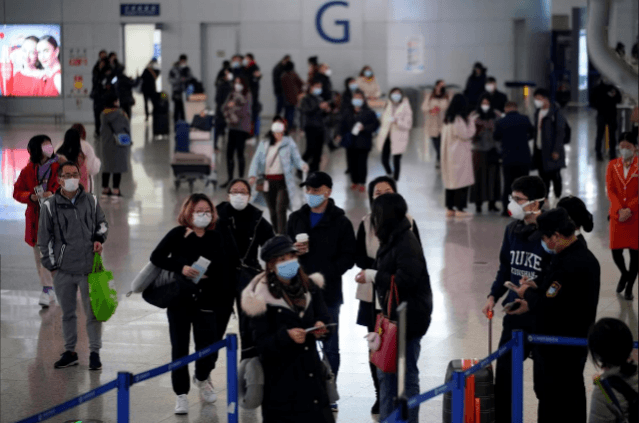An American became the first confirmed non-Chinese victim of the new coronavirus on Saturday while a Japanese man also died with symptoms consistent with the disease, as the epidemic looked set to pass the death toll from the SARS pandemic in rapid time.

The 60-year old US citizen diagnosed with coronavirus died at Jinyintan Hospital in China's Wuhan, the epicentre of the virus outbreak, on Feb 6, a US embassy spokesman in Beijing said.
"We offer our sincerest condolences to the family on their loss," the spokesman told Reuters. "Out of respect for the family's privacy, we have no further comment."
A Japanese man hospitalized with pneumonia in Wuhan also died after suffering flu-like symptoms consistent with the new coronavirus, Japan's foreign ministry said.
The man in his sixties was suspected of having been infected with the coronavirus but due to difficulties in diagnosing the disease the cause of death was given as viral pneumonia, the ministry said citing Chinese medical authorities.
As of noon on Thursday, 17 foreigners were being quarantined and treated for the disease in China, according to government figures. No updated figures were immediately available.
The total death toll in mainland China rose by 86 to 722 on Saturday, according to Chinese authorities, and is poised to pass the 774 deaths recorded globally during the 2002-2003 pandemic of Severe Acute Respiratory Syndrome (SARS), another coronavirus that jumped from animals to humans in China.
SARS outbreak between November 2002-July 2003

During the SARS outbreak between November 2002 and July 2003, the number of reported cases was 8,098, suggesting a far lower transmission rate than the latest coronavirus, but a higher mortality rate.
So far only two deaths have been reported outside mainland China - in Hong Kong and the Philippines - from about 332 cases in 27 countries and regions. Both of those victims were Chinese nationals.
"It is hard to say how lethal this novel coronavirus infection is," Professor Allen Cheng, an infectious diseases expert at Monash University in Melbourne, told Reuters.
"While the crude mortality appears to be around 2%, there are likely to be many people who have been infected that haven't been tested ... We probably won't know the true case fatality for some time yet."
Hubei officials on Saturday reported 81 new deaths, 67 of those in Wuhan, a city under virtual lockdown. Across mainland China, excluding the 2,050 people who had recovered and those who had died, the number of outstanding cases stood at 31,774.
Beijing's communist leadership has sealed off cities, cancelled flights and closed factories to contain the epidemic, with ripple effects for global markets and businesses dependent on the world's second-biggest economy.
Saturday marked the final day of the Lunar New Year celebrations, usually characterized by family gatherings, fireworks, riddle-guessing and the lighting of lanterns.
This year, most people were eating dumplings, a traditional custom, at home alone. On national television, a gala show will feature recitation of poems on counter-virus efforts instead of the usual music and dancing.
News of the death on Friday of Li Wenliang, a doctor who raised the alarm about the new coronavirus, sorrow and outrage on Chinese social media and rekindled memories of how Beijing was slow to tell the world about the SARS outbreak.
Li, who succumbed to the disease in a Wuhan hospital, was among eight people reprimanded by police in the city for spreading "illegal and false" information after he shared details of the virus with colleagues.














